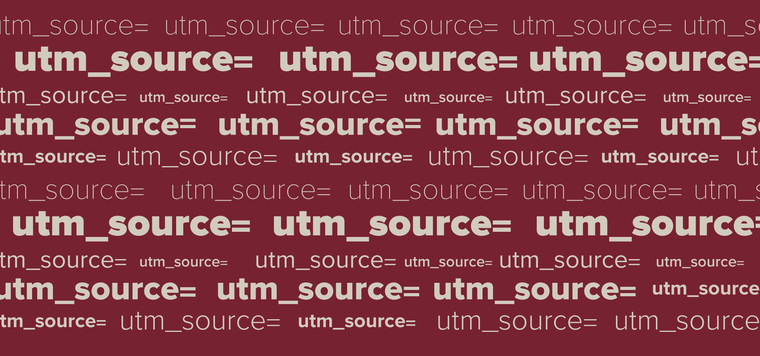
UTM parameters are a powerful way to track results and understand how your hospital or healthcare system campaigns are performing.
You’re under pressure to prove the value and results of your recent marketing campaigns. And, like many healthcare organizations, you may be struggling to measure success. Fortunately, UTM parameters can be quickly applied to help you glean insights from the data they generate.
What are UTM parameters?
Also known as UTM codes, UTM parameters are snippets of code that are appended to URLs in order to track different sources of traffic to your website from various advertising and marketing channels and tactics. They are extremely useful for tracking the success of campaigns and the various elements that comprise them.
When should I use UTMs?
Google Analytics automatically categorizes different types of traffic to your site into broad categories such as organic, paid, social, email, direct, referral and others. This is helpful information overall.
But often you need to get a granular understanding of which mediums and sources are driving traffic to your campaign landing pages or other pages on your site to understand your campaign’s success. UTM parameters can help!
Using UTMs for each of your various campaign components lets you see how much traffic each one of them is generating, and how valuable that traffic is.
This means that if you have Google Analytics Goals set up on your site, using UTM codes lets you see what rate traffic from different campaign sources is converting on your site. For example, you can see how much traffic your radio ad is generating vs. a display ad for the same campaign, and of those two, which one is generating the most conversions (i.e., a specific campaign goal, or high-level site goals such as online appointment requests).
What else can UTM codes do for you?
For purposes of example, the fictional Benefit Health heart care team wants to track the various traffic they’re sending to their heart campaign landing page (www.benefithealth.org/heart). Our campaign elements include:
Creating a UTM code for each ad type allows us to understand which ones are generating traffic for the website, as well as the most conversions. How? We’ll need to add UTM code to the end of each landing page URL.
For things like direct mail or on-air radio ads, a vanity URL will redirect to a specific UTM code so they can be appropriately tracked. Vanity URLs are simiple, easy-to-remember, and brand-friendly URLs that redirect to a specific page, like a campaign landing page, of your website.
Here’s how it breaks down using our heart campaign example:
benefithealth.org/heart?
utm_source=Facebook Ad &utm_medium=Social Media
Display ads (local newspaper)
benefithealth.org/heart?
utm_source=Gazette Daily News&utm_medium=Display Ad
Direct mail Vanity: benefithealth.org/beatinghearts
benefithealth.org/beatinghearts?
utm_source=Beating Hearts Mailer&utm_medium=Direct Mail
Radio (local station) Vanity: benefithealth.org/hearts
www.benefithealth.org/beatinghearts?
utm_source=KZIA&utm_medium=Radio&utm_campaign=Beating Hearts
How do I create a UTM code?
It’s easy! Google offers a free UTM code generator, which they call a Campaign URL Builder. Here’s an example we built with our fictional Benefit Health heart campaign.
Where do I find UTM code data in Google Analytics?
In Google Analytics, you’ll find traffic that’s tracked with UTM codes under the Acquisition > Campaigns > All Campaigns section. You can track UTM codes with social, emails, advertisements, and more.
Learn more about how to view UTM code data in Google Analytics.
Tips for using UTM codes
When establishing UTM codes for your campaign tracking, it’s a good idea to keep the following tips in mind:
The original version of this page was published at: https://www.geonetric.com/digital-strategy/how-to-use-utm-codes-healthcare-marketing-success/
At Geonetric, we create compelling digital experiences on our VitalSite content management system, as well as Sitecore, Drupal and other platforms. As a digital experience agency with deep technica... Read more
Rise above the ups and downs of Google BERT Algorithm update with these tips.Google recently announced an algorithm update that may affect 10% of all search results. This makes it ...read more
Chart a path to digital marketing success.From team size and digital spend to emerging challenges and redesign cycles, download the 2018 Healthcare Digital Marketing Trends Survey ...read more
Whether search rankings have you down or you just know it’s time to refresh your content, keeping SEO in mind is key!Often, enhancing your content is a necessary step to boost ...read more
Get the most out of Google’s crawl budget with some insight and best practices.While it may come as a surprise to some, Google doesn’t always crawl every page of a website ...read more

Ask a Healthcare Lawyer: HIPAA Compliance for Healthcare Marketers
Your FAQs...Answered!